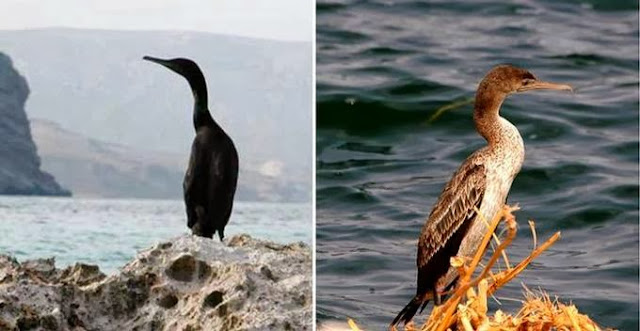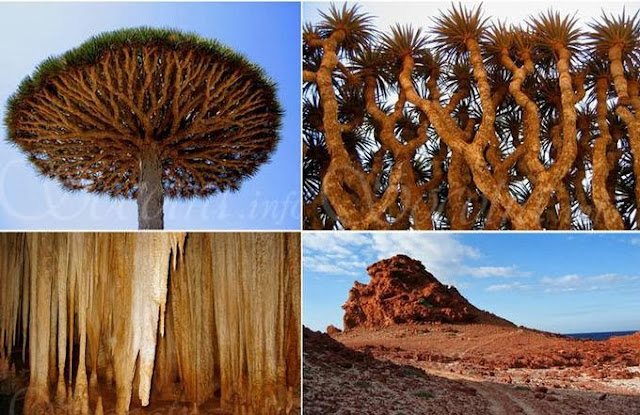Strange Planet
Yes it is right here on Earth but there is no landscape anywhere like it.
Waking up on this island called Socotra would have you looking around
in wonder and disbelief
that you are actually on Planet Earth.
Dorstenia gigas - apparently does not require any soil and sinks roots straight into the bare rock
It also has a distinct personality and likes to smile for the camera
Socotra is one of those "lost world" islands (separated from the world six million years ago) where intrepid travellers - particularly those seeking exotic nature and wildlife in a remote tropical setting - can go days on end without rubbing shoulders with that less-than-endangered species: tourists. Known for decades as the Galapagos of the Indian Ocean, it's the world's tenth richest island for endemic plant species. And it's the biggest island in the Middle East…125 km in length and 45 km across. Meanwhile, the landscape is one of contrasts; for example, it has isolated nature preserves with dazzling wildlife, including 900 species of plants, the famous Dragon's Blood Tree "dracaena cinnabara," some of the rarest birds that exist nowhere else in the world, and picturesque sandy beaches.
Fairy-tale and possibly haunted shipwrecks. There are diving tours available.
To give you a glimpse of Socotra's and Yemen's in general totally unique architecture, check out this place located on the mainland: Al Hajarah, Yemen - Walled city in the mist
The name Socotra is derived from a Sanskrit name, meaning "The Island of Bliss"
This island is a birder's paradise as well, with 140 different species of birds, 10 of which are not found anywhere else in the world. A unique Socotra warbler, sunbird, starling, bunting, sparrow, and cisticola are among the ones found here. There are also Socotra Cormorants
Getting around can be a challenge, as there are almost no roads. Despite the fact that this island has around 40,000 inhabitants, the Yemeni government put in the first roads just 2 years ago - after negotiations with UNESCO, which has declared this island a World Natural Heritage Site. You might prefer a camel ride to what is bound to be a bumpy and slow 4x4 ride... It is a quiet and peaceful enclave in an otherwise troubled world. If you decide to visit there, you can forget about beachfront hotels and restaurants; this island is geared towards eco-tourism and sustaining the local economy and way of life.
Also found in Socotra's landscape is the ever-strange and extremely rare Cucumber Tree (dendrosicyos socotranum) - and yes, it's related to what's sitting in a pickle jar in your fridge
The trees and plants of this island were preserved through the long geological isolation, some varieties being 20 million years old... the dracena cinnibaris or Dragon's Blood Tree, the source of valuable resin for varnishes, dyes, and "cure-all" medicine; also (predictably) used in medieval ritual magic and alchemy.

























No comments:
Post a Comment
Note: Only a member of this blog may post a comment.